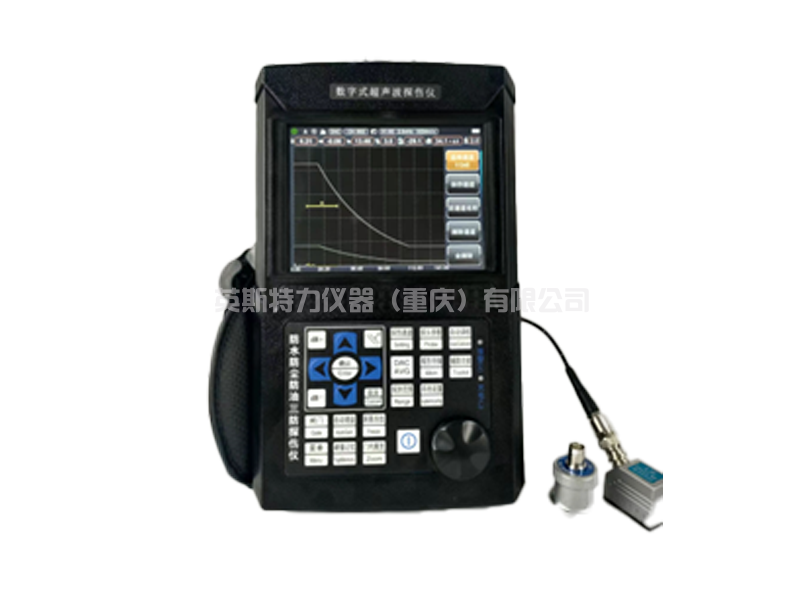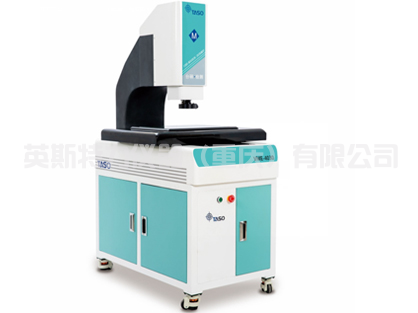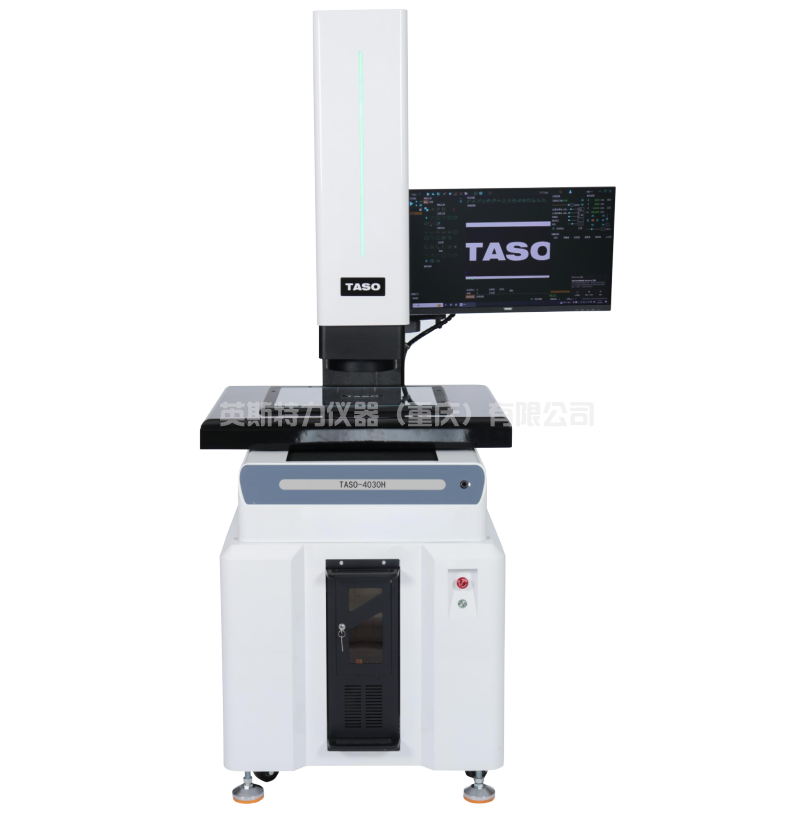如今,硬度計已廣泛應用于工廠、車間等行業各種金屬材料的硬度測量。 然而,硬度計的種類繁多,消費者往往會擔心硬度計的選擇。 接下來,我們就可以了解一下常見的三種硬度計的使用范圍和區別。
在測量金屬的硬度時,洛氏硬度計、布氏硬度計和維氏硬度計比較多。 據統計,在硬度計的使用中,洛氏硬度計的應用已達到70%。 洛氏硬度計常用的標尺有HRC、HRB和HRF,其中HRC標尺用于測試淬火鋼、回火鋼、調質鋼和部分不銹鋼。 這是金屬加工行業中使用最廣泛的硬度測試方法。 HRB 標尺用于測試各種退火鋼、正火鋼、低碳鋼、一些不銹鋼和更硬的銅合金。 HRF 標尺用于測試純銅、較軟的銅合金和硬鋁合金。 盡管 HRA 標尺也可用于大多數黑色金屬,但其實際應用通常僅限于測試硬質合金和薄硬鋼帶材料。
使用洛氏硬度試驗時,當材料薄、試樣小、表面硬化層淺或測試表面涂層時,應改用表面洛氏硬度試驗。 洛氏硬度計適用于批量加工的成品或半成品工件的逐件檢測。 這種測試方法對測量操作要求不高,非專業人員也很容易掌握。 它可以測試各種黑色金屬和有色金屬,測試淬火鋼、回火鋼、退火鋼、表面硬化鋼、各種厚度的板材、硬質合金材料、粉末冶金材料和熱噴涂層的硬度。
布氏硬度計特別適用于組織不均勻的鍛鋼和鑄鐵的硬度測試。 布氏硬度試驗也可用于有色金屬和低碳鋼。 小直徑球壓頭可以測量小尺寸和薄材料。 布氏硬度計主要用于檢測原材料和半成品。 由于壓痕較大,一般不用于灰口鑄鐵、軸承合金和成品中晶粒粗大的金屬材料的檢測。 其測試數據穩定,重現性好,精度高于羅克韋爾,低于維氏。 此外,布氏硬度值與抗拉強度值有很好的對應關系。 布氏硬度測試的缺點是壓痕大,成品檢驗困難,測試過程比洛氏硬度測試復雜,測量操作和壓痕測量耗時,凸度大 、壓痕邊緣的凹陷或平滑過渡會使壓痕直徑的測量有較大的誤差,因此要求操作者具有熟練的測試技術和豐富的經驗,一般要求由專門的實驗人員操作。
維氏硬度計是檢測熱處理工件表面硬度的重要方法。 它可以用0.5到100kg的試驗力來測試薄至0.05mm厚的表面硬化層。 它具有最高的精度,可以區分熱處理工件的表面硬度。 小的差異。 此外,有效硬化層的深度也由維氏硬度計檢測。 因此,對于進行表面熱處理加工或使用大量表面熱處理工件的單位,需要配備維氏硬度計。
硬度表示材料抵抗硬物進入其表面的壓力的能力。 它是金屬材料的重要性能指標之一。 一般來說,硬度越高,耐磨性越好。 常用的硬度指標有布氏硬度、洛氏硬度和維氏硬度。
區別如下:
1、布氏硬度(HB)
光學原理,測量圓形壓痕的直徑。 以一定的載荷(一般為3000kg)將一定尺寸(一般為直徑10mm)的硬化鋼球壓入材料表面,并保持一段時間。 去除載荷后,載荷與其壓痕面積之比為布氏硬度值(HB),單位為千克力/mm2(N/mm2)。
特點:壓痕大,精度高;
缺點:光學原理,壓痕直徑需要通過目鏡用肉眼測量。
但可選擇CCD硬度圖像處理系統(壓痕圖像投影在電腦上)
2.洛氏硬度(HR)
原理是測量深度。 當HB>450或樣品太小時,不能使用布氏硬度測試,而改用洛氏硬度測量。 它是用一個頂角為120°的金剛石錐體或直徑為1.59和3.18mm的鋼球在一定載荷下壓入被測材料表面,從深度得到材料的硬度。 縮進。 根據測試材料的硬度不同,用三種不同的尺度表示:
HRA:是用60kg載荷和金剛石圓錐壓頭得到的硬度,用于超高硬度的材料(如硬質合金等)。
HRB:是用100kg載荷和直徑為1.58mm的硬化鋼球得到的硬度。 用于硬度較低的材料(如退火鋼、鑄鐵等)。
HRC:是用150kg的載荷和金剛石圓錐壓頭得到的硬度,用于硬度較高的材料(如淬硬鋼等)。
優點:操作簡單快捷,直接數顯; 是三種硬度計中最容易操作和使用的。
缺點:無法測量0.2mm以下太薄的工件
3.維氏硬度(HV)
光學原理,測量金剛石壓痕的對角線長度。 用120kg以內的載荷和頂角為136°的金剛石方錐壓頭壓入材料表面,將材料壓痕坑的表面積除以載荷值,即為維氏硬度HV 值 (kgf/mm2)。
特點:壓痕大,精度高,可測量薄工件。 是三款機器中測量范圍最廣的。
缺點:光學原理,壓痕直徑需要通過目鏡用肉眼測量。
但可選擇CCD硬度圖像處理系統(壓痕圖像投影在電腦上)
以上就是為大家總結的三種常用硬度計的區別,希望對大家選擇硬度計有所幫助。
英斯特力儀器是一家集研發、生產及銷售于一體的 影像測量儀,拉力試驗機, 硬度計 ,探傷儀, 粗糙度儀, 測厚儀, 金相設備廠家, 致力于為客戶提供更好的檢測儀器。
Nowadays, hardness tester has been widely used in factories, workshops and other industries to measure the hardness of various metal materials. However, there are many kinds of hardness tester, and consumers often worry about the choice of hardness tester. Next, we can understand the common three kinds of hardness tester use scope and difference.
In the measurement of metal hardness, Rockwell hardness tester, Brinell hardness tester and Vickers hardness tester more. According to statistics, in the use of hardness tester, rockwell hardness tester application has reached 70%. HRC, HRB and HRF scales are commonly used in Rockwell hardness tester. HRC scales are used to test hardened steel, tempered steel, tempered steel and some stainless steel. This is the most widely used hardness test in the metalworking industry. HRB scales are used to test various annealed and normalized steels, mild steels, some stainless steels and harder copper alloys. HRF scales are used to test pure copper, softer copper alloys and duralumin alloys. Although the HRA scale can be used with most ferrous metals, its practical application is usually limited to testing cemented carbide and thin hard steel strip materials.
When using the Rockwell hardness test, when the material is thin, the sample is small, the surface hardening layer is shallow or the surface coating is tested, the surface Rockwell hardness test should be used instead. Rockwell hardness tester is suitable for batch processing of finished or semi-finished workpiece test piece by piece. This test method is not demanding for measurement operation and is easy for non-specialists to master. It can test all kinds of ferrous and non-ferrous metals, test the hardness of hardened steel, tempered steel, annealed steel, surface hardened steel, sheet metal of various thicknesses, carbide materials, powder metallurgy materials and thermal spraying layer.
Brinell hardness tester is especially suitable for testing the hardness of forged steel and cast iron with uneven structure. Brinell hardness test can also be used for non-ferrous metals and mild steel. Small diameter ball indenter can measure small size and thin material. Brinell hardness tester is mainly used for testing raw materials and semi-finished products. Because of the large indentation, it is generally not used for the detection of gray cast iron, bearing alloy and finished metal materials with coarse grain. The test data is stable and reproducible, the accuracy is higher than rockwell and lower than Vickers. In addition, brinell hardness and tensile strength have a good relationship. Is the shortcoming of brinell hardness test indentation, finished goods inspection is difficult, the testing process living cells-recognition complex hardness test, operation and indentation measurement time consuming, big crown, indentation on the edge of the sag or smooth transition will make the indentation diameter measurement has bigger error, therefore asked the operator proficiency testing technology and rich experience, general requirements by professional experiment operation.
Vickers hardness tester is an important method to measure the surface hardness of heat-treated workpiece. It can test surface hardening layers as thin as 0.05mm with test forces of 0.5 to 100kg. It has the highest accuracy and can distinguish the surface hardness of heat-treated workpiece. Small differences. In addition, the depth of the effective hardening layer is measured by vickers hardness tester. Therefore, for the surface heat treatment processing or use a large number of surface heat treatment of the workpiece unit, need to be equipped with vickers hardness tester.
Hardness is the ability of a material to resist the pressure of a hard object entering its surface. It is one of the important performance indexes of metal materials. Generally speaking, hardness is taller, wear resistance had jumped over. Commonly used hardness indicators are Brinell hardness, Rockwell hardness and Vickers hardness.
Vickers hardness tester, Brinell hardness tester and Rockwell hardness tester are the three most commonly used hardness tester.
The differences are as follows:
1. Brinell Hardness (HB)
Optical principle, measurement of circular indentation diameter. A hardened steel ball of a certain size (generally 10mm in diameter) is pressed into the surface of the material with a certain load (generally 3000kg) and maintained for a period of time. After removing the load, the ratio of the load to the indentation area is the Brinell hardness number (HB) in kg force per mm2 (N/mm2).
Features: large indentation, high precision;
Disadvantages: optical principle, indentation diameter needs to be measured by eyepiece with naked eye.
But can choose CCD hardness image processing system (indentation image is projected on the computer)
2. Rockwell Hardness (HR)
The principle is to measure depth. When HB> If the sample is 450 or too small, the Brinell hardness test should not be used. The Rockwell hardness test should be used instead. It uses a diamond cone with a top Angle of 120° or a steel ball with a diameter of 1.59 and 3.18mm to press into the surface of the measured material under a certain load to get the hardness of the material from the depth. The indentation. According to the hardness of the test material, three different scales are used to express:
HRA: Hardness obtained with a 60kg load and a conical diamond indentor for ultra-high hardness materials such as hard alloys.
HRB: hardness obtained with 100kg load and 1.58mm diameter hardened steel ball. Used for low hardness materials (such as annealed steel, cast iron, etc.).
HRC: hardness obtained with a 150kg load and a conical diamond indenter for higher hardness materials such as hardened steel etc.
Advantages: simple and quick operation, direct digital display; It is the easiest of the three kinds of hardness tester to operate and use.
Disadvantages: unable to measure the workpiece which is too thin below 0.2mm
3. Vickers Hardness (HV)
Optical principle, measuring the diagonal length of diamond indentation. A diamond square cone indender with a load less than 120kg and a tip Angle of 136° is pressed into the surface of the material, and the surface area of the material indentation pit is divided by the load value, which is the Vickers hardness HV value (KGF /mm2).
Features: large indentation, high precision, thin workpiece can be measured. It has the widest measuring range among the three machines.
Disadvantages: optical principle, indentation diameter needs to be measured by eyepiece with naked eye.
But can choose CCD hardness image processing system (indentation image is projected on the computer)
The above is the summary of three kinds of common hardness tester differences, I hope to help you choose hardness tester.







 客服1
客服1 